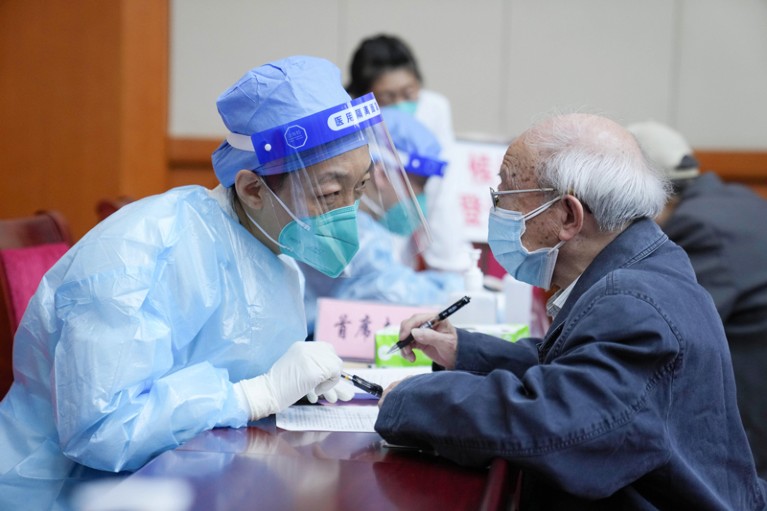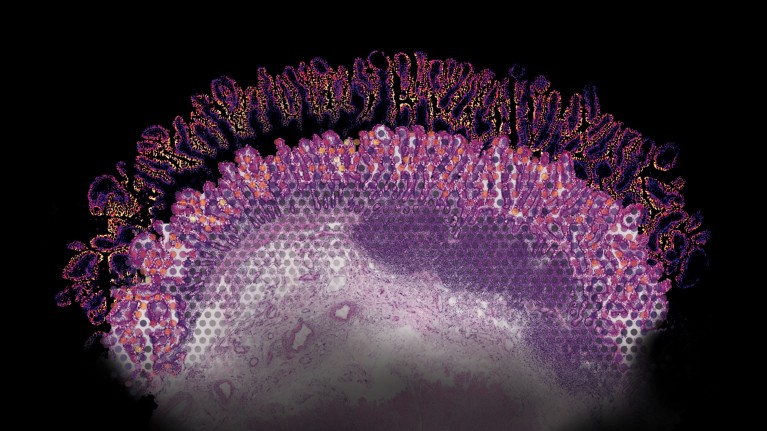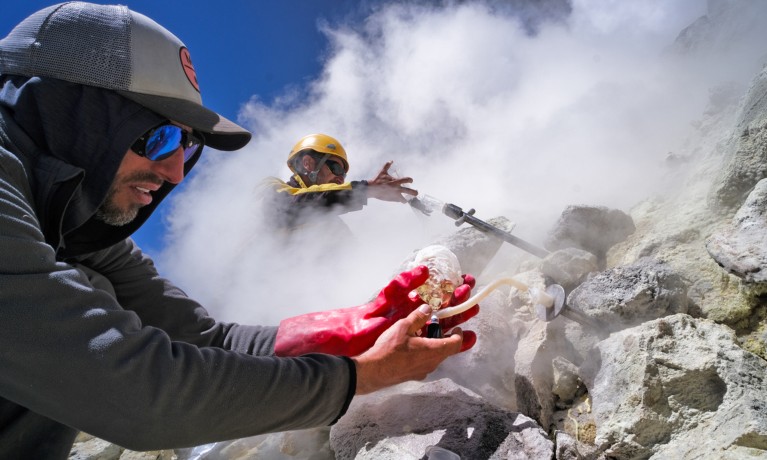Hello Nature readers, would you like to get this Briefing in your inbox free every day? Sign up here

Clinical trials for an mRNA vaccine called ArCoV are under way in China.Credit: Ju Huanzong/Xinhua/Alamy
China gets closer to its first mRNA vaccine
China is progressing towards approving ArCoV, its first mRNA vaccine to protect people against COVID-19. In a small clinical trial, an ArCoV booster shot seemed to trigger a stronger antibody response than an inactivated-virus vaccine of the type that the country has mostly relied on. China has so far been unwilling to approve mRNA vaccines developed by outsiders, and many older people haven’t received boosters. A more-effective home-grown jab might alleviate the governments’ fears about loosening some of its strict ‘zero COVID’ restrictions.
What should new COVID vaccines look like?
This week, an advisory panel to the US Food and Drug Administration will meet to discuss whether COVID-19 vaccines should be updated — and what the upgraded versions should look like. Many — although by no means all — scientists agree that COVID-19 vaccines are overdue for change. But constantly emerging variants and hard-to-predict immune responses mean that it’s far from clear what the vaccines should look like.
Similar smells spark friendship
People with similar body odours are more likely to instantly get along as friends. Researchers used human smellers and a smell-detecting ‘electronic nose’ to sniff the scents of 20 pairs of same-sex, non-romantic friends. Both found that friends smell more like each other than do random pairs. And when scientists put strangers together, those who smelled alike said they ‘clicked’ better when playing a non-speaking game.
Reference: Science Advances paper
Features & opinion

Gene-expression data captured using an array-based method for spatial transcriptomics, overlaid on a stained section of human gut tissue.Credit: Ludvig Bergenstråhle
Pinpoint gene activity at the cellular level
Computational and experimental methods are bringing researchers closer to their goal of revealing exactly where in a cell or tissue each gene is expressed. Spatial transcriptomics allows researchers to study gene expression in samples without destroying them, opening frontiers in cancer research and revealing previously inaccessible biology of otherwise well-characterized tissues. The resulting ‘atlases’ of spatial information can tell scientists which cells make up each tissue, how they are organized and how they communicate.
How the peanut trade prolonged slavery
In Slaves for Peanuts, environmental journalist Jori Lewis reveals how French colonizers in what is now Senegal violently promoted the perpetuation of slavery long after it was purportedly outlawed, to keep peanuts and peanut oil flowing. Reviewer and Nature reporter Amy Maxmen writes that the book is bolstered by its use of oral histories and the lyrics of griots — singers revered as historians and poets in West Africa — as sources.
Hiring tips for postdocs and lab leaders
In the market for a postdoctoral position that will support and help you to prepare for eventually becoming a group leader? Geneticist Allison McClure describes how she secured her first postdoc and shares her thoughts on how laboratories can attract candidates.And for lab leaders looking to hire a postdoc, cell and developmental biologist Caroline Hill shares her tips for finding the right postdoctoral researcher for your group.
Nature | 7 min read (for postdocs) & Nature | 5 min read (for lab leaders)
Where I work

Maarten de Moor is a volcanologist at the National University of Costa Rica in Heredia.Credit: Jacopo Pasotti for Nature
“As a volcanologist, being in a crater and feeling the movement and pressure under your feet is almost a spiritual experience,” says Maarten de Moor. “I call the craters my natural laboratory.” (Nature | 3 min read)
See more shots from this story on the Nature Instagram account.
